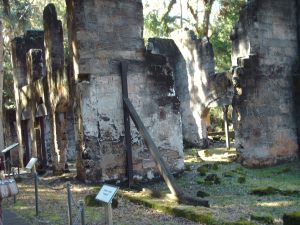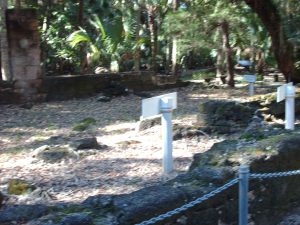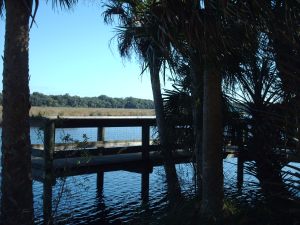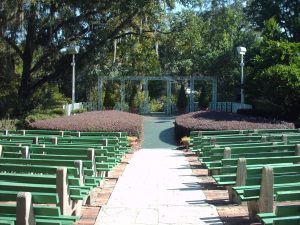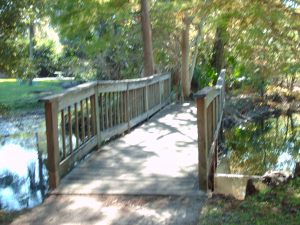Clermont Historic Village located on 480 West Avenue in Clermont. The village comprised of The Railroad Depot, The Townsend House, The Kern House, The World War II Museum, The Cooper Memorial Library and The Herring Hooks Schoolhouse.
The Railroad Depot
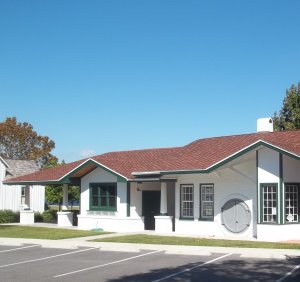 In the mid-1880s, the railroad lines went from Lake Monroe to Oakland. Two years later the railroad added service to Minneola, Clermont, Groveland and eventually to St. Petersburg. The Railroad Depot built in 1925 replaced many of the original buildings.
In the mid-1880s, the railroad lines went from Lake Monroe to Oakland. Two years later the railroad added service to Minneola, Clermont, Groveland and eventually to St. Petersburg. The Railroad Depot built in 1925 replaced many of the original buildings.
The Townsend House
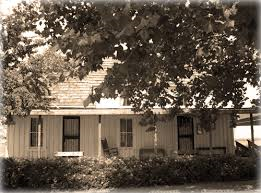 The Townsend House built in 1895 home to Sally and James Townsend the first African American family in Clermont. They founded The AME Church still in existence today. Sally Townsend a midwife delivered over 1,000 babies both black and white.
The Townsend House built in 1895 home to Sally and James Townsend the first African American family in Clermont. They founded The AME Church still in existence today. Sally Townsend a midwife delivered over 1,000 babies both black and white.
The Kern House
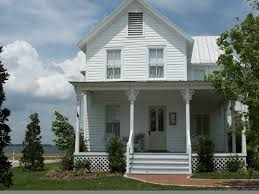 The Kerns from New Jersey moved to Clermont and built their home in 1885. Mr. Kern one of the original signers of the Clermont charter. He owned and operated a General Store. Their son was the first mayor of Clermont.
The Kerns from New Jersey moved to Clermont and built their home in 1885. Mr. Kern one of the original signers of the Clermont charter. He owned and operated a General Store. Their son was the first mayor of Clermont.
The World War II Museum
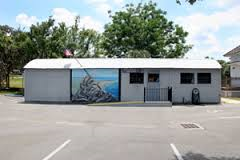 Photos on the wall of aviators and posters illustrating recruiting stations. Different badges of the different corps and divisions represented and newspaper articles of different battles shown. Small handbooks of French, Russian and the Soldiers Basic Combat Training Handbook exhibited on the shelves as well as replicas of tanks. Personal memorabilia of a soldier who fought in World War II now a guide in the museum; he has lived in Clermont since 1945.
Photos on the wall of aviators and posters illustrating recruiting stations. Different badges of the different corps and divisions represented and newspaper articles of different battles shown. Small handbooks of French, Russian and the Soldiers Basic Combat Training Handbook exhibited on the shelves as well as replicas of tanks. Personal memorabilia of a soldier who fought in World War II now a guide in the museum; he has lived in Clermont since 1945.
The Cooper Memorial Library
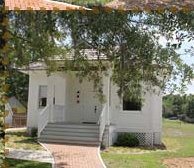 The construction of the library started in 1914, cost $600.00, and named after Mr. and Mrs. Montgomery Cooper. Before the library was constructed, people would go to private homes and checkout books. The docent told us that the wood floor is original and termites could not destroy the floor.
The construction of the library started in 1914, cost $600.00, and named after Mr. and Mrs. Montgomery Cooper. Before the library was constructed, people would go to private homes and checkout books. The docent told us that the wood floor is original and termites could not destroy the floor.
The Herring Hooks Schoolhouse
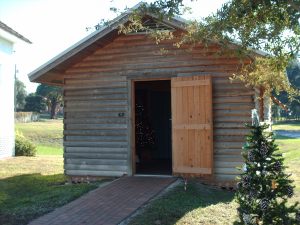 The Herring Hooks Schoolhouse a replica of the original log schoolhouse built in 1881. Pictures of graduating students in Clermont-Minneola High School class of 1921, 1940 through 1945. Rules for teachers in 1872 and 1915 on the wall.
The Herring Hooks Schoolhouse a replica of the original log schoolhouse built in 1881. Pictures of graduating students in Clermont-Minneola High School class of 1921, 1940 through 1945. Rules for teachers in 1872 and 1915 on the wall.
